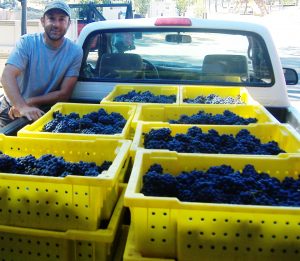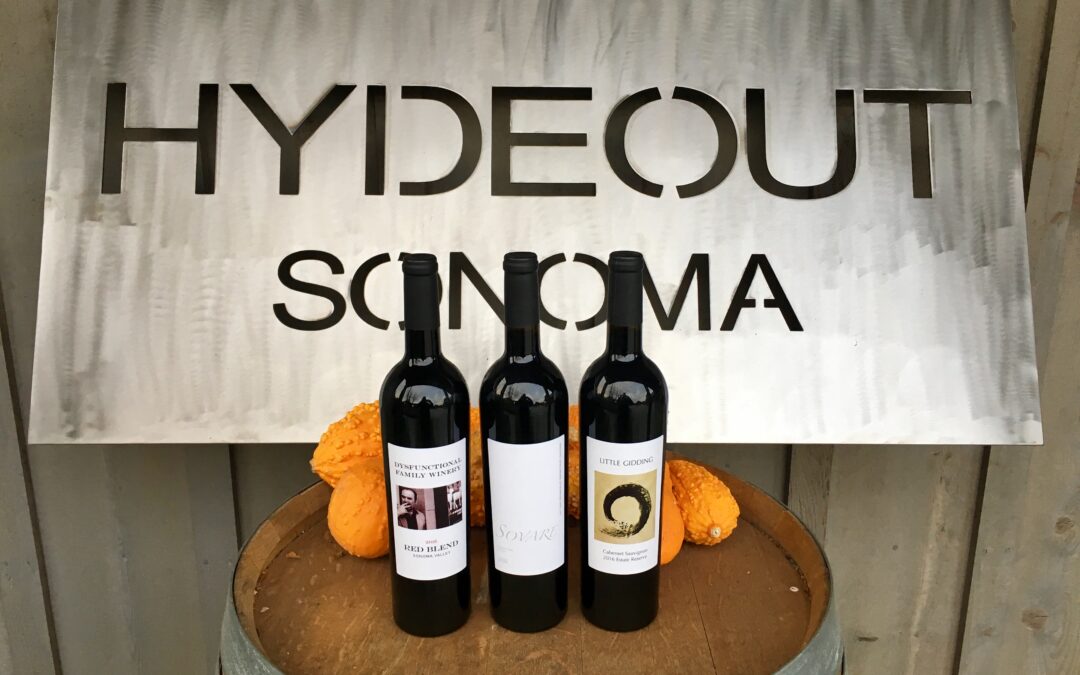
Dec 24, 2017 | Sonoma, Vineyard, Wine
Congratulations to these three Hydeout Consulting clients – each of whom released their innaugural vintage this week. Each has a unique story to tell…
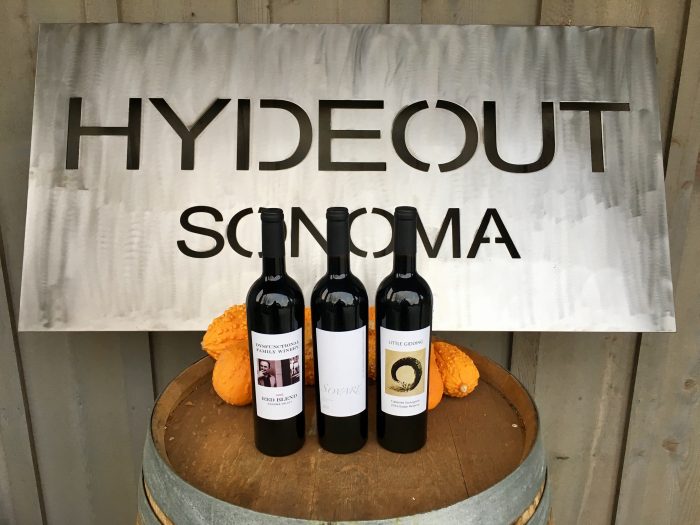
SOVARE 2016 Sonoma Valley red blend – This client spared no expense in the farming and winemaking to produce a unique ultra-premium inky red. It is a field blend of equal parts Sangiovese, Zinfandel, and Cabernet Sauvignon from their rugged hillside vineyard on the flanks of Sonoma Mountain, just south of Kenwood. Aged in 50% new French oak and 50% one-year old American oak, it is a deep, dark, and spicy wine with evident body, offers superb balance between tannins and acidity, and will age to perfection over time. The name ‘Sovare’ deconstructed means ‘Sonoma Valley Red.’ This wine will be available only in the Bay Area and New York.
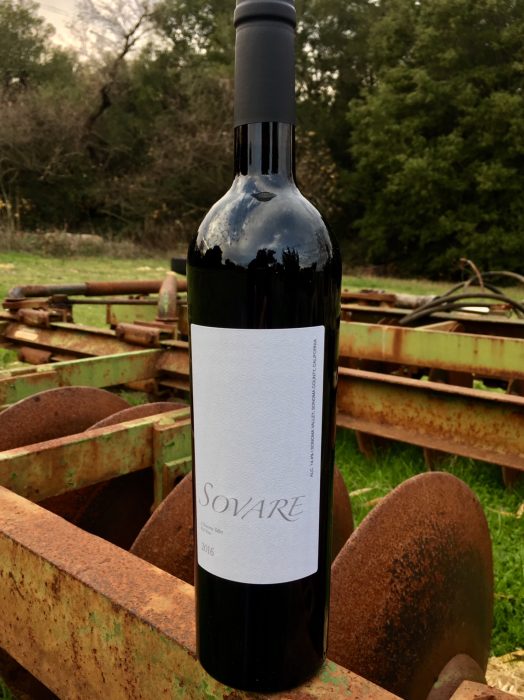
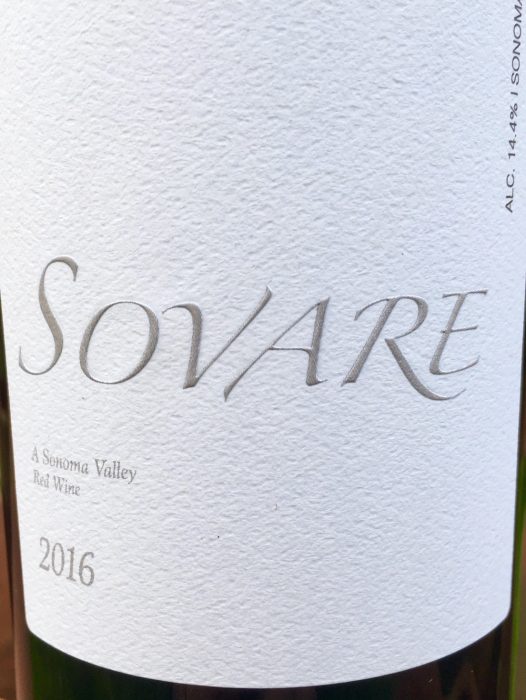
Little Gidding 2016 Cabernet Sauvignon – 100% estate Cabernet, an incredible hillside vineyard also flanking Sonoma Mountain, just 2 very special acres wrapping around a steep hillside with exposures to the east, south, and west, the wine was aged in 100% new French oak, and is a direct hit for what Sonoma Cabernet can be – austere, bright, cherry red, with smooth elegant tannins right out of the gate. Available only through Little Gidding in Sonoma.
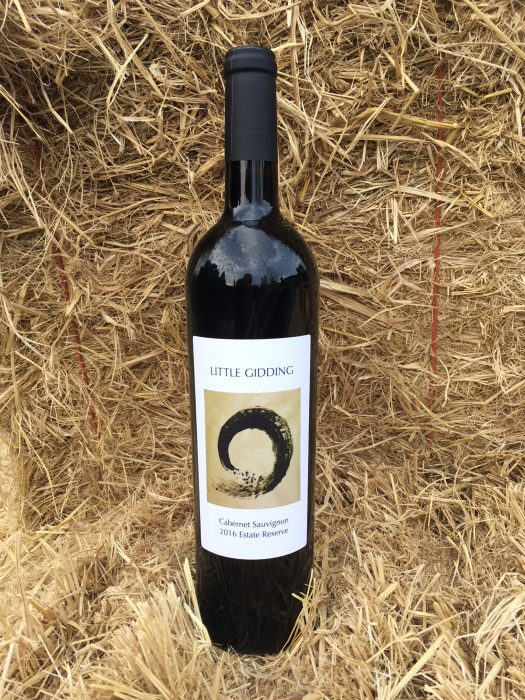
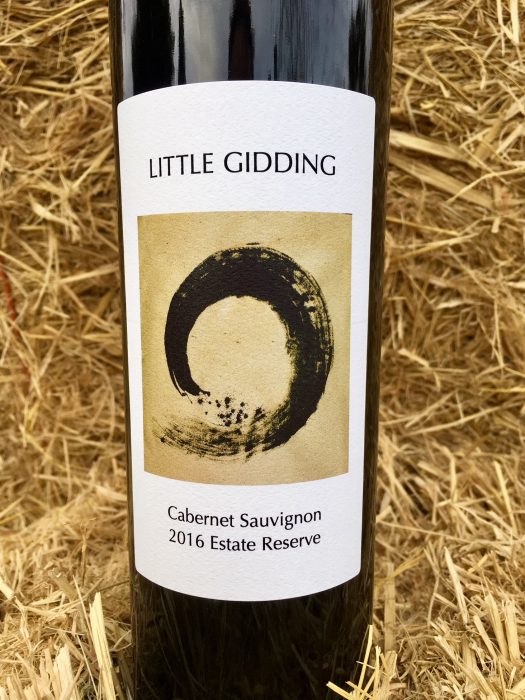
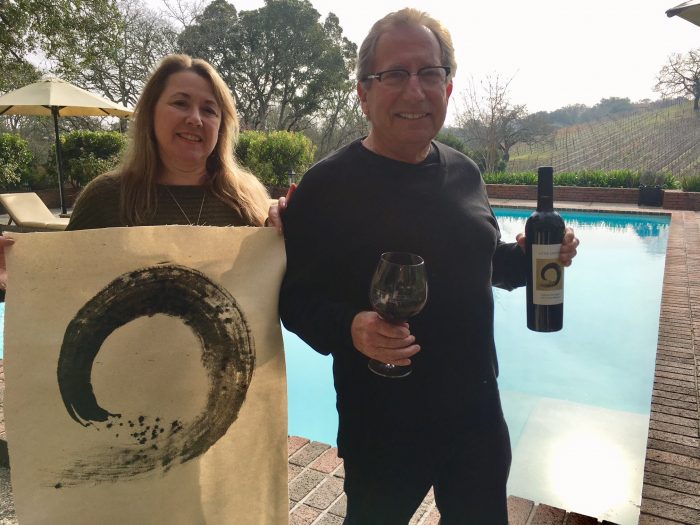
Dysfunctional Family Winery 2016 red blend – purposefully irreverent, and intended to make light of all the ‘perfect families’ so often featured in the wine press, this client has a contrarium approach and loves wines that are bravely blended from multiple varieties and sources from widely varying sites around Sonoma Valley. This wine is 35% Syrah (from the valley floor), 25% Cabernet (Sonoma Mountain), 20% Merlot (Carneros), and 20% Zin (Kenwood).
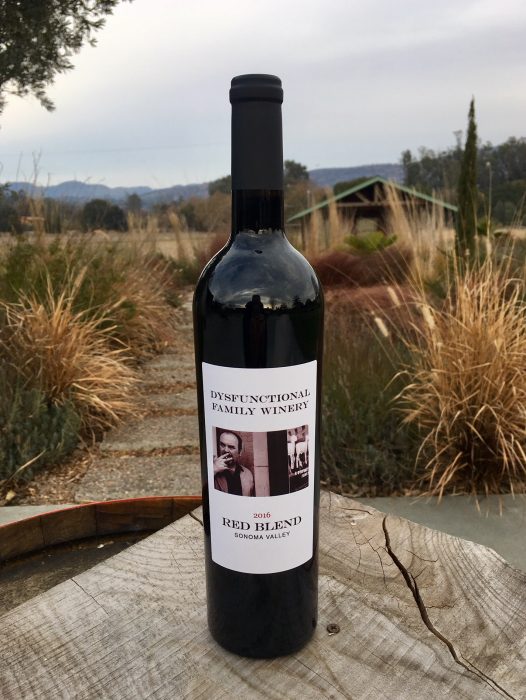
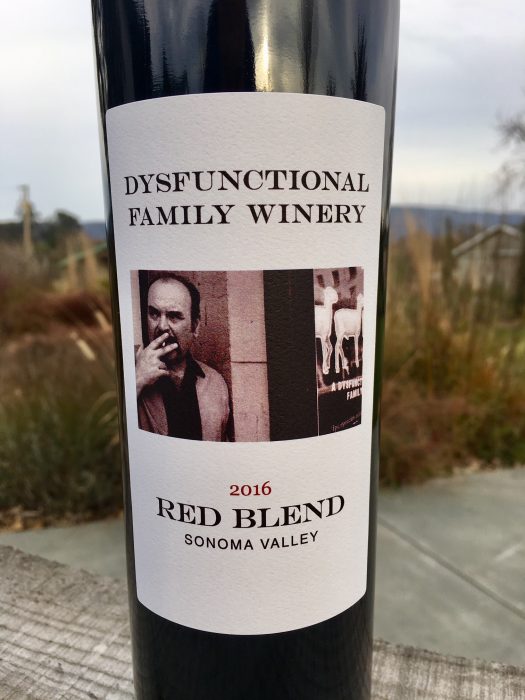
For more info, see these links:
click here for more Hydeout Sonoma blog entries
Sonoma Mountain make singular wines
or here for world’s oldest man drinks a glass of red wine every day!
Sonoma Magazine’s top wine of 2017
Happy holidays to all our wonderful subscribers. See you in 2018!
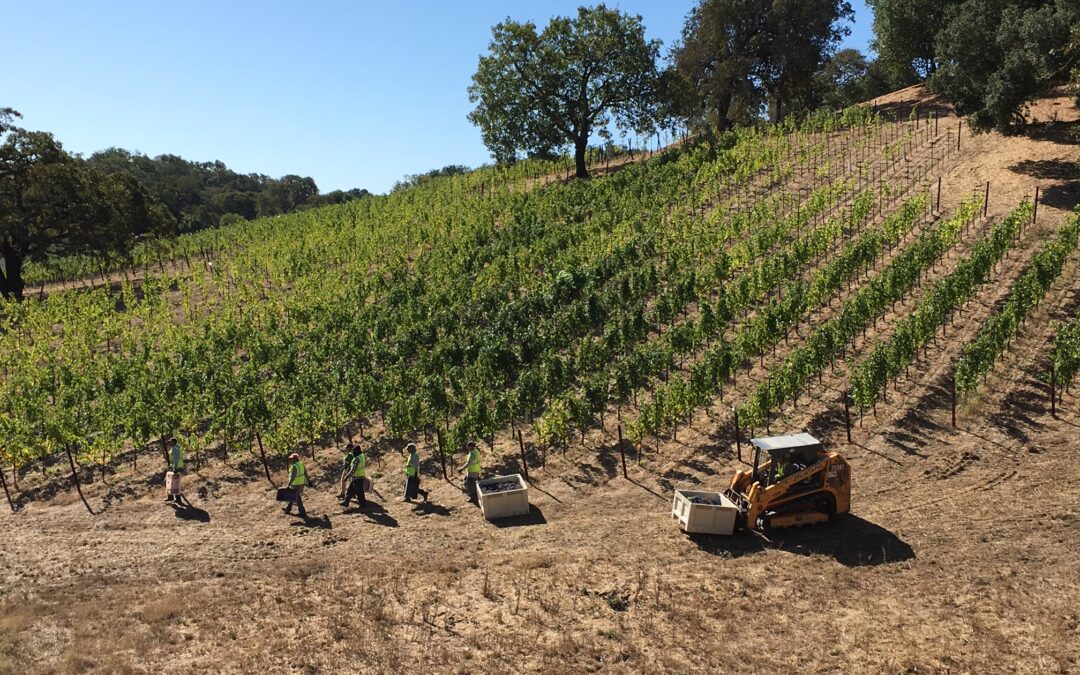
Oct 8, 2017 | Vineyard, Wine
The Sonoma grape harvest of 2017 is almost over.
Here is video and imagery from the field and at the winery…
First, the videos:
Video: Fruit being loaded into half ton bin
Video: Time lapse of removing stems on the sorting table
And the still images:
Syrah ready to be picked…
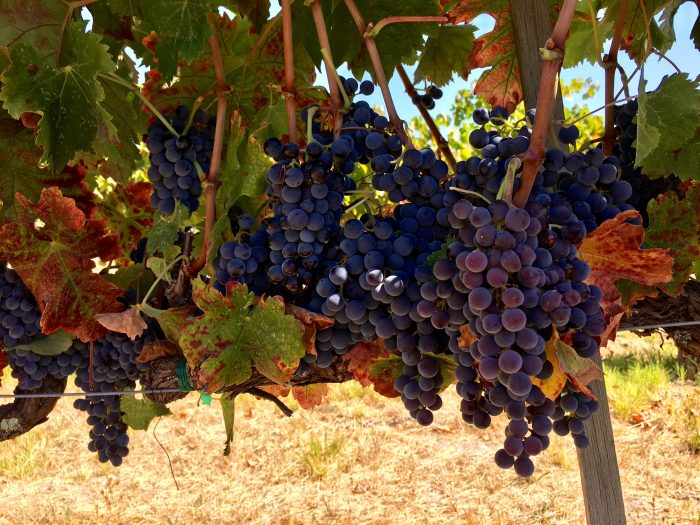
Harvest crew (yellow) works a line of Merlot while foreman (orange supervises) and the bobcat with a half ton bin follows:
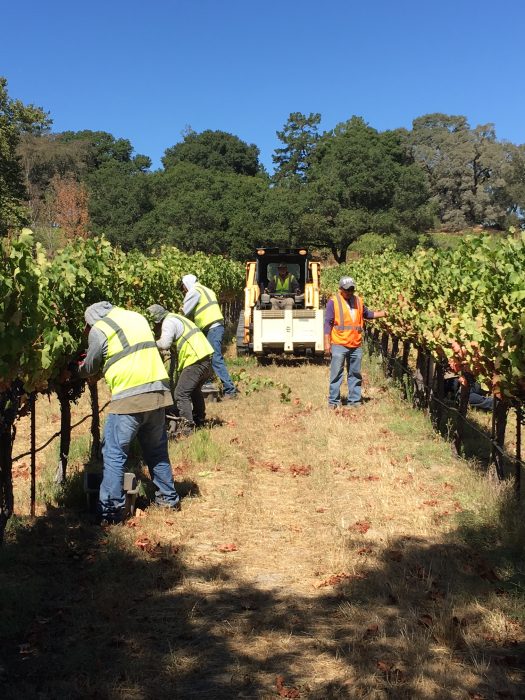
Closeup view of a hillside block of Cabernet…
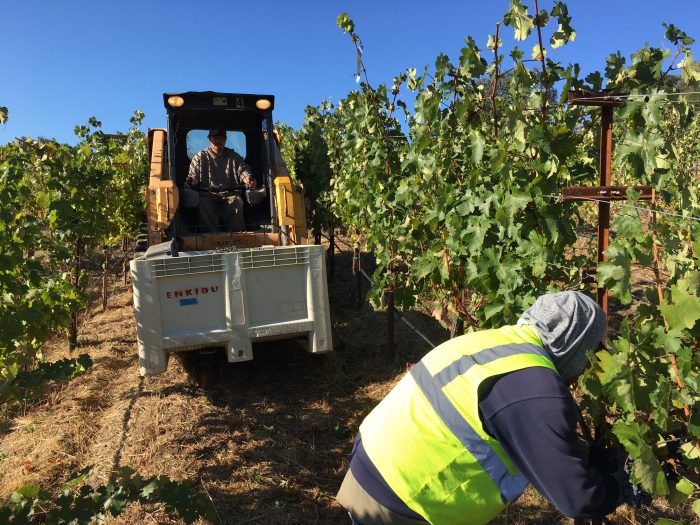
The last of the rows of this block almost picked…
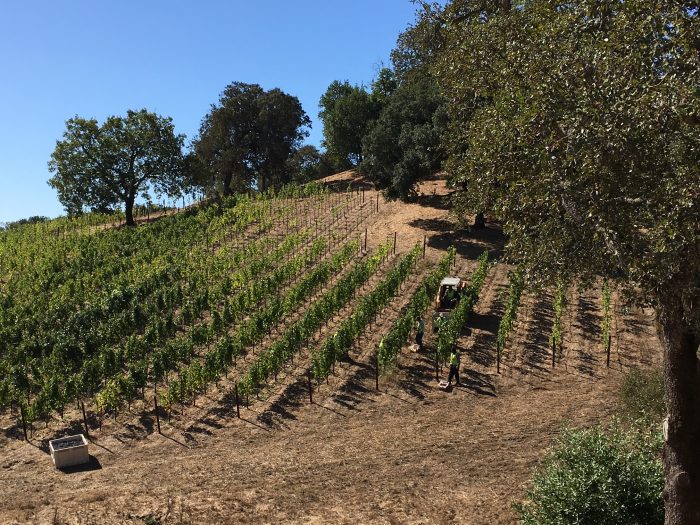
The crew departs this hillside block with 3/4 ton picked…
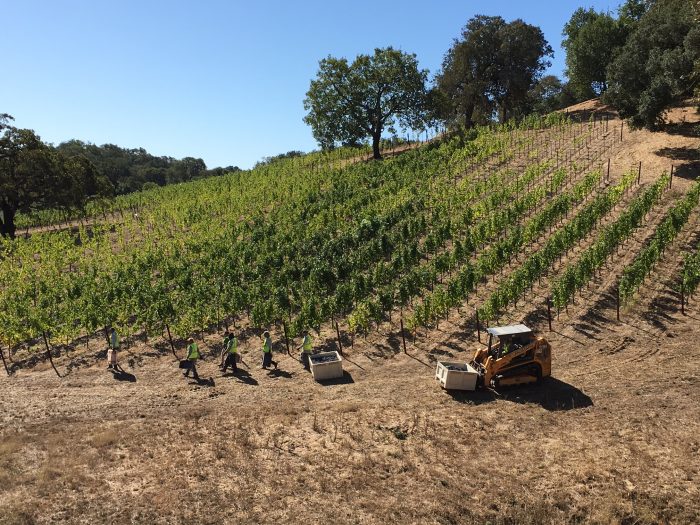
The 40 pound picking lugs get cleaned…
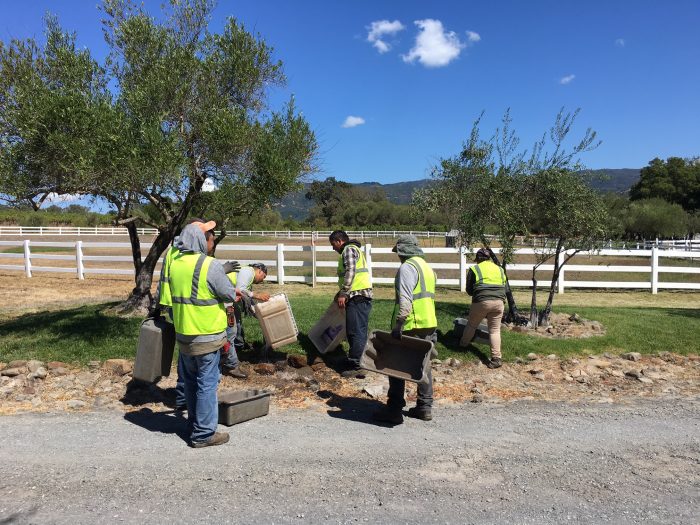
The Mustang loads bins onto the pickup truck, bins go on the trailer next…
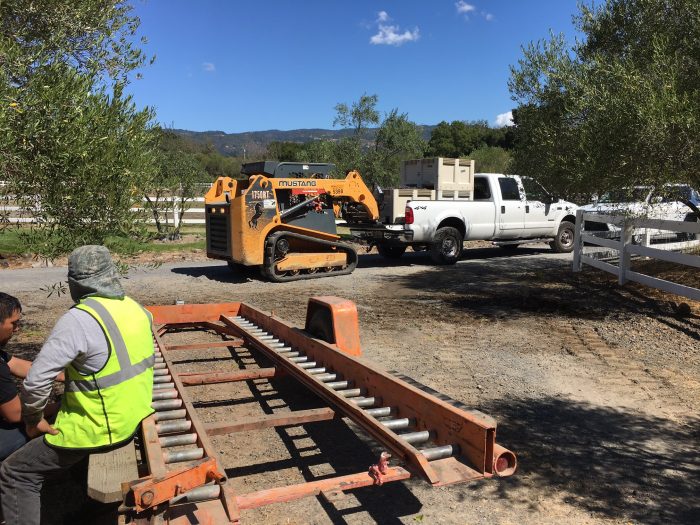
Closeup view of Hydeout fruit…
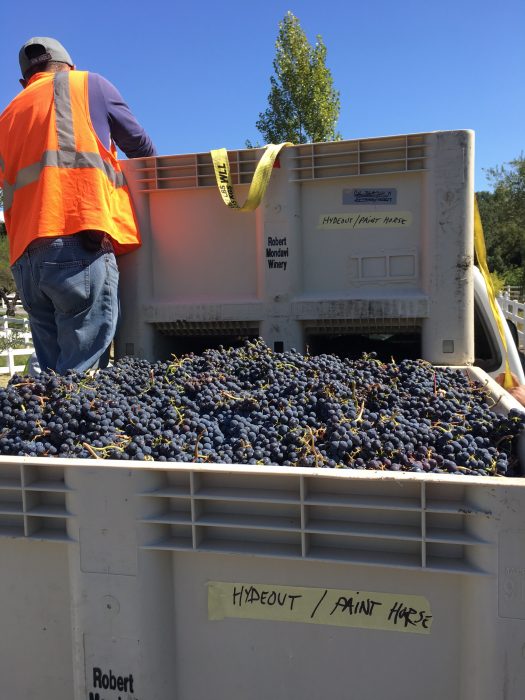
An example of a Cal State ‘Weighmaster Certificate’ issued to me when this small lot of Cabernet arrived at it’s destination, the custom crush winery, Deerfield Ranch…
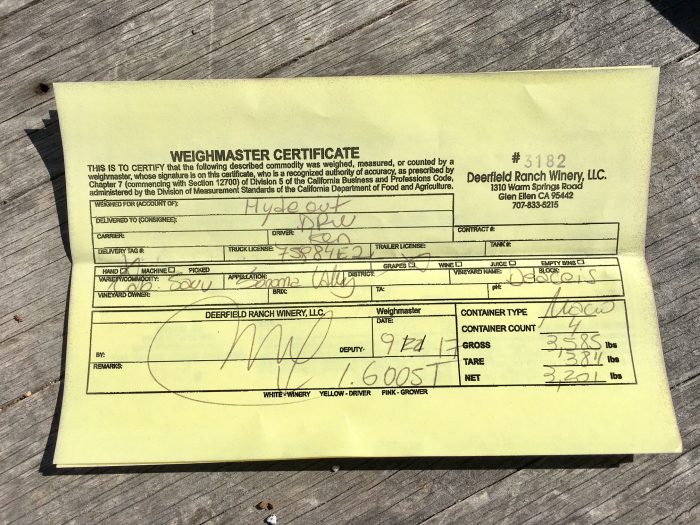
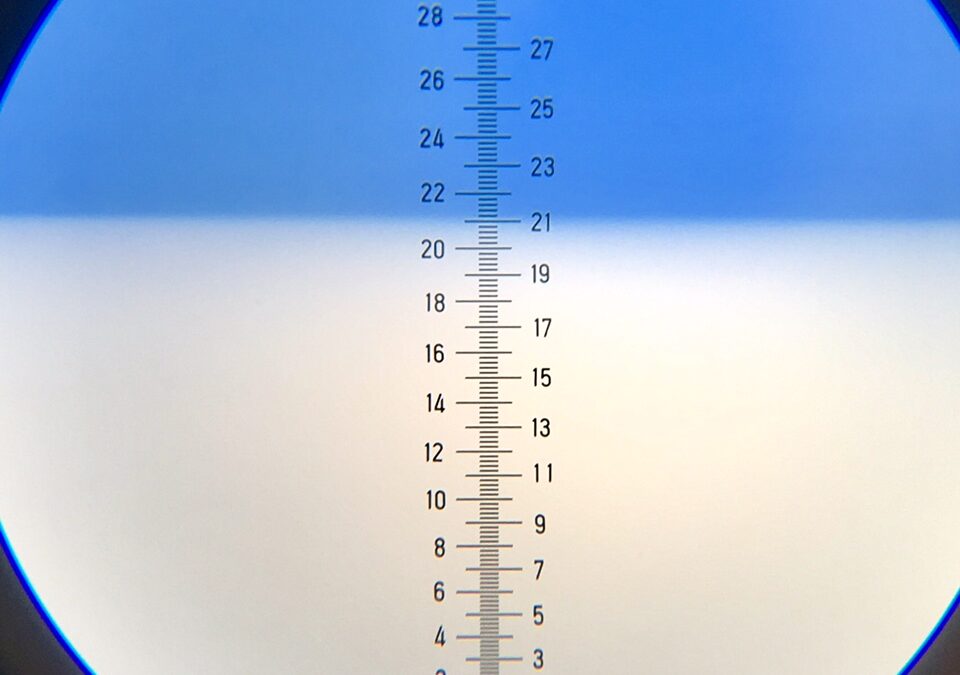
Aug 27, 2017 | Vineyard, Wine
In Sonoma, the harvest is already well underway for sparkling wines and some Pinots. But for the deeper darker reds, we are just starting to do field sampling of berries. And beginning to forecast the harvest schedule. This is vital because every winery has a different style of wine and elects to harvest using different benchmarks. In addition, there is necessarily a lot of planning to assure that manpower is ready to go, tractors and picking bins are in place, and the winery is ready with open tanks for fruit delivery. Thus we start forecasting way in advance…
Below is a quick review of some fruit conditions around Kenwood and Bennett Valley as of Saturday am, August 26th, 2017:
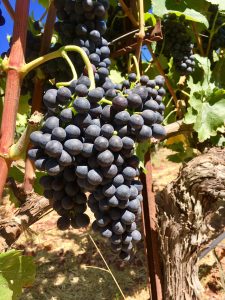
Above is some nicely ripening Syrah, this one is the Bien Nacido clone (historically emanating from the Santa Maria Valley, and notably used by Qupe’ and Au Bon Climat).
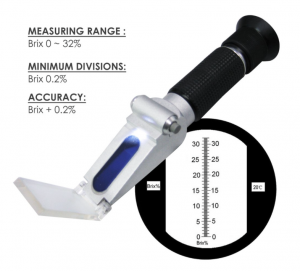
This is a typical hand held field refractometer. With a few drops of raw grape juice on the window (the blue glass), the light is ‘refracted’ through the viewfinder indicating the percent dissolved solids, which is essentially a proxy for total sugar, i.e. ‘brix.’
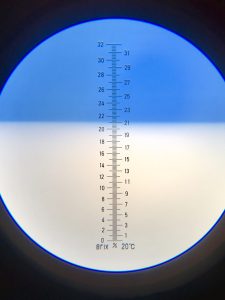
This is a view through a hand held field refractometer.
And you can see this Syrah sample shows brix at about 21 (the intersection of blue and white), resulting in about 10.5% alcohol (if harvested today). Naturally, we are monitoring ripeness looking for closer to 24.7 brix and closer to 13% alcohol (although ultimately in very fine wines, such as ours, seed ripeness, tannins, pH, TA, and many other inputs will be considered before the harvest)
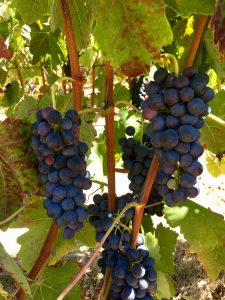
Here is some slightly less ripe Syrah, with equally sized berries but smaller clusters, this being the Durell clone (from the famous Durell Vineyard of the 1970’s in Sonoma).
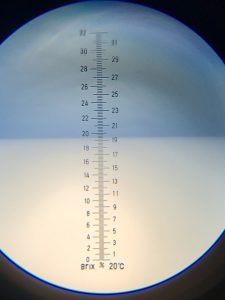
And the brix are lower, hovering closer to 19.
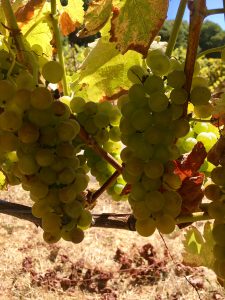
With the Syrahs above, we simultaneously pick and co-ferment about four percent Viognier, seen here. Both Syrah and Viognier originate from the Rhone Valley in France.
On average, and very roughly depending on variety, clone, rootstock, day and night temps, wind, etc, clusters will gain about 1.5 brix per week. Thus a sample at 19 today, with a goal of 25 at harvest is about 4 weeks away…
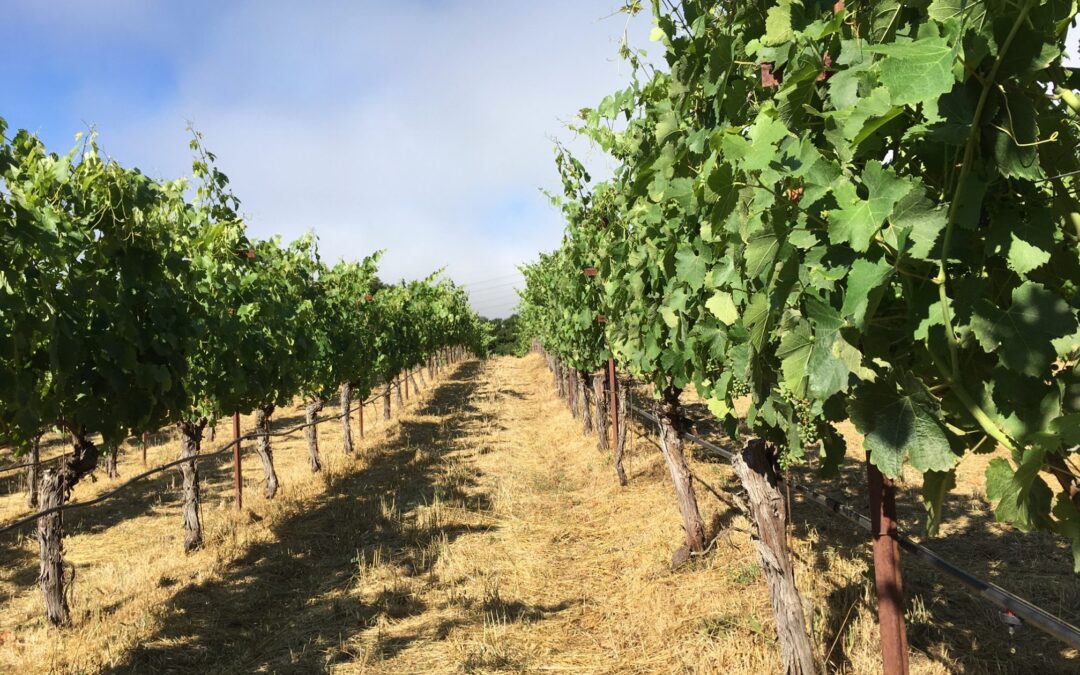
Jul 23, 2017 | Vineyard, Wine
Standing out in the middle of a vineyard in Bennett Valley yesterday, it struck me how many times I have been asked, “hey Ken, what are they growing in that vineyard over there?” I almost always have to give the same answer – “almost impossible to say.” This is because in the middle of winter, when all the leaves are gone, or in midseason, when all vines leaves and fruit clusters are green, you have to get right up close to the leaves before you can know whether it is a red or a white grape, let alone figure out the variety. Identifying grape varieties by leaf shape is called ampelography, and even the best growers and winemakers have a hard time distinguishing one variety from another based on leaf shape alone.
But not so when comparing almost any variety of grapevine to rootstock. Most rootstocks have a very unique and different shape from their wine grape variety cousins. And the best way to explain it is in a few simple pictures:
In this image below, it is plainly difficult to discern one vine from another. It may seem hard to accept, but in early July, it would be hard from this angle to know whether this is Cab, Syrah, Pinot, or Chardonnay. In fact, upon closer inspection of the fruit clusters, it is often easier to identify which variety this might be. But again, just walking by, it’s very unlikely even a pro would know unless they are working with prior knowledge, or otherwise with much closer inspection.
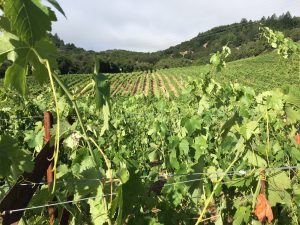
Conversely, rootstock looks a LOT different than wine grape leafs. And one glance below makes that quite clear. For those unfamiliar – most (but not all) wine grapevines, such as Cabernet or Chardonnay, are grafted onto rootstock. The rootstock has an entirely different history of parentage, makes very poor wine, but has characteristics that are very desirable, such as high drought tolerance, or vigor in poor shallow soils. Note in the picture below how round and small the leaves are compared to their Pinot Noir cousins next door. These small rootstock shrubs will someday have a wine variety ‘grafted’ onto them, rendering only the roots underground useful and important to the ultimate wine vine:
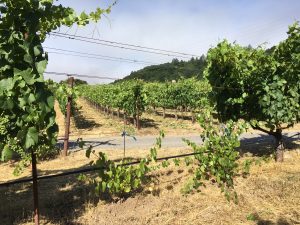
And here in this closeup, you can plainly see that these leaves really do look much different from their Syrah cousins in the background across the road.
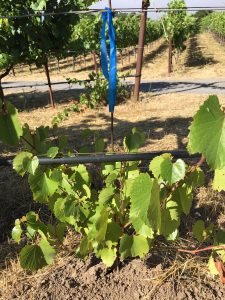
Now compare the above shape, color, and size of the above rootstock leaf with the picture below, and you can now plainly be sure whether you are looking at the leaves of rootstocks or wine grapes!
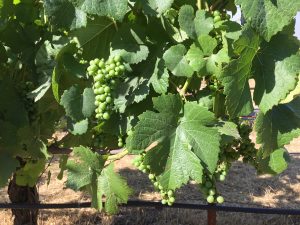
For more information on this topic, see:
This link to grapevine leaf identification:
https://www.wineaustralia.com/getmedia/21669eff-05de-41d9-9ef8-283b1e01edcb/201008-Vine-identification.pdf
And this link about the parentage and application of grapevine rootstocks:
http://www.wonderfulnurseries.com/resources/rootstock-guide.pdf
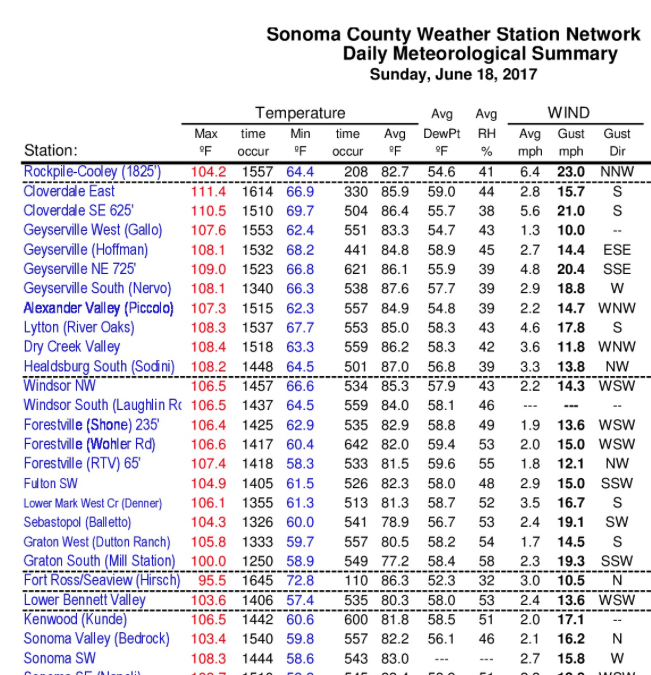
Jun 22, 2017 | Vineyard, Wine
Roaring hot in Sonoma this week…
Anecdotal information is always susceptible to mental inflation, especially when it comes to weather. Fact-based meteorology is more reliable. But still, it sure felt like this was the hottest temperature any of us could recall in our entire careers here in wine country. Here is the proof from many weather stations positioned around Sonoma wine country:
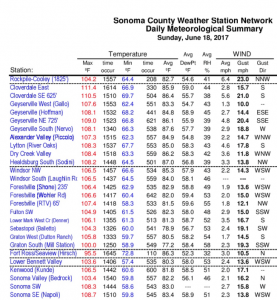
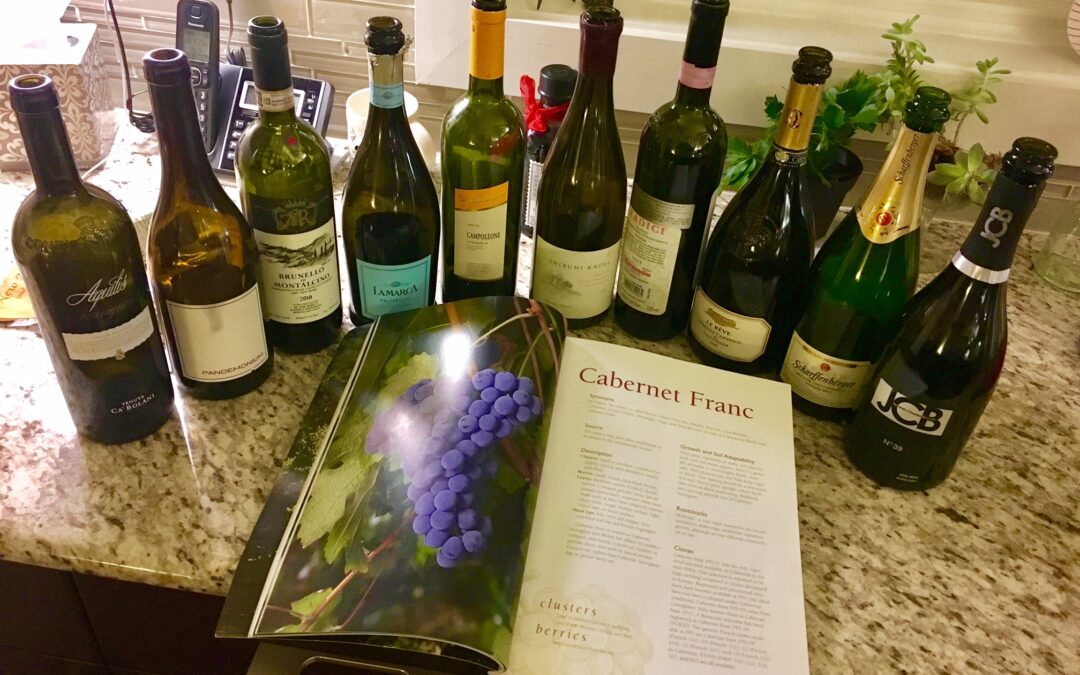
Jun 11, 2017 | Vineyard, Wine
For 20 years, I have been growing grapes, making wine, launching my client’s wine brands, and hopefully entertaining people with candid anecdotes from the wine industry. In this weekly blog, expect to see reports from field, crush pad video, commentary on misconceptions, and eventually (when I get brave enough to stick my neck out!) leaning towards politically incorrect material about the wine business. I hope to post once per week, typically on Sunday mornings. Comments always welcome. Outrageous entertaining replies encouraged.
